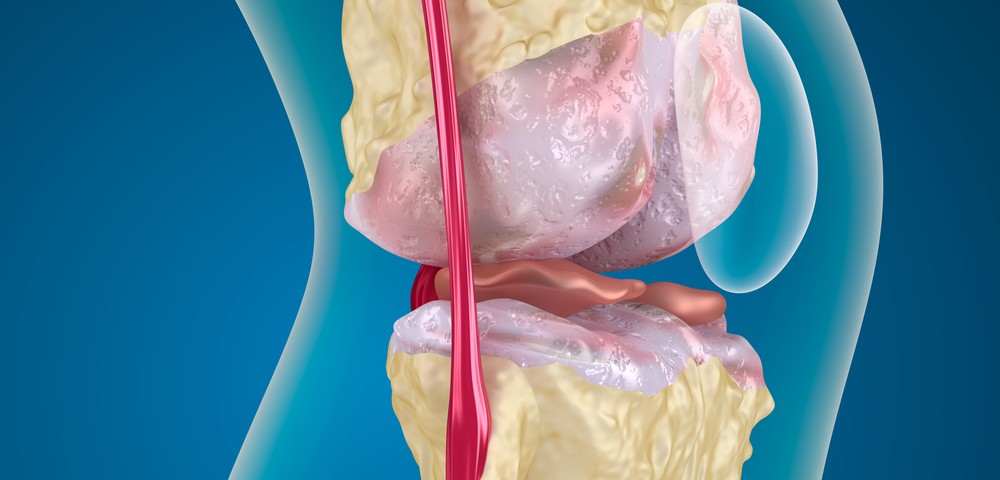University of Rochester Medical Center researchers have studied the joint tissue of rheumatoid arthritis (RA) patients, finding that B-cells in these tissues play an important role in bone erosion, contributing to joint destruction.
The research also yielded a promising biomarker, the molecule RANKL, that might be able to help in the identification of patients with progressive joint damage who would benefit from targeted therapies. The research paper, “Production of RANKL by Memory B Cells: A Link Between B Cells and Bone Erosion in Rheumatoid Arthritis,” was published in Arthritis and Rheumatology.
RA disease mechanisms are fairly complex, involving activation of bone-resorbing osteoclasts and the immune system. Therapies targeting RA have focused on B-cells, as these immune cells are known to be involved in the attack of joint tissue in RA. However, many patients who receive B-cell depletion therapy fail to respond to the treatment, and bone erosion continues.
Contrary to common research procedures where the blood of patients is studied, researchers studied B-cells in the target tissue of RA patients and healthy controls to determine if B-cells play a direct role in the erosion of bone tissue. Cells extracted from RA patient’s blood produced more RANKL,which led to production of bone-degrading osteoclasts. This effect was even more pronounced in B-cells extracted from RA patients’ joint fluid and tissue. These findings are the first to demonstrate that B-cells are directly involved in bone tissue erosion observed in RA.
Moreover, researchers found that B-cells from RA patient’s joint samples expressed RANKL spontaneously, while B-cells from their blood required stimulation from pro-inflammatory molecules. This could mean there are different populations of B-cells within the disease, so targeting specific subsets of harmful B-cells may lead to more effective RA therapies.
“We know that there are good B-cells and you don’t want to eliminate those. But there are some B-cells that are more pathogenic. So you might want to target subsets of B-cells, not all of them at once,” said the study’s first author, Dr. Nida Meednu, in a news release.
Researchers believe RANKL can also be used as a biomarker for patient stratification, primarily identification of patients with progressive joint damage and which drugs may benefit each patient.
“Patients with high RANKL on B-cells — especially in the joint — may be most responsive to different types of B-cell targeted therapies,” said senior author Dr. Jennifer H. Anolik, M.D., who was recently awarded a grant from the National Institutes of Health Accelerating Medicines Partnership in Rheumatoid Arthritis and Lupus Network.


